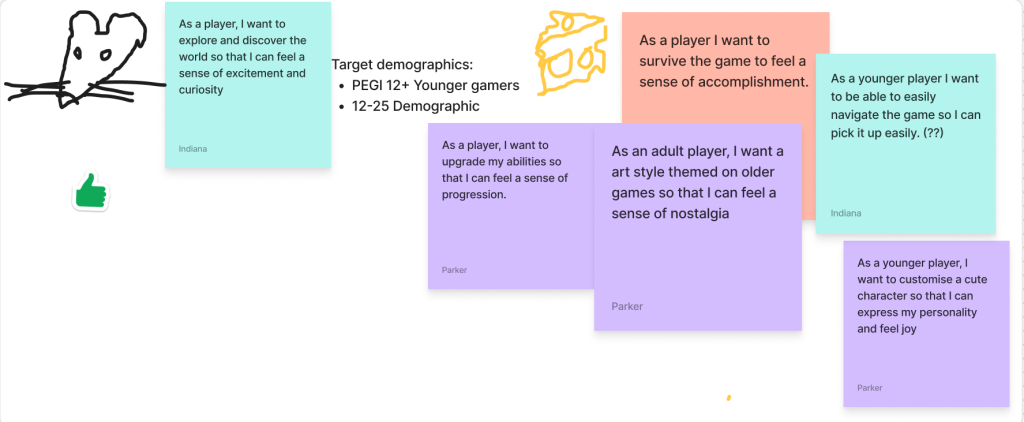MONDAY:
Paul MacGillivray on Product Management:
This week we had a guest lecture by Paul MacGillivray on being able to manage a product, a much-needed lesson with such a beheamoth task as ours. He was able to guide us through how to break down production, as well as tools, methods, and time management.
Production Triangle: cost vs. time vs. scope
SCOPE:
You define scope by breaking down the key game features into deliverables. You further break down the deliverables into tasks needed to make them.
Example: Deliverable – Character
- Concept art
- Model
- Texture
- Rigging
- Porting to Engine
TIME:
Think about how much time is needed for each task. Start with your best guess, then estimate more than you need.
DEVELOPMENT STAGES:
- Pre-production:
- Planning and prototyping
- Acquiring data to plan out the rest of development
- Proving the core is good enough to proceed
- Working towards a vertical slice
- Production:
- Alpha: first content pass
- Beta: playable but unfinished
- Release: finished product
- Post-launch: bug and glitch updates; DLC’s
To determine what to work on first, make a list in order of priority, and find out your dependencies – other work that can’t be started until other stages have been completed. Split up the work and assign it to specific people, and do not over-assign.
Plan for contingencies!!! Things will not always go to plan!!! It’s important to have a plan B.
Make sure to dedicate time to bug fixing and polish. In our case, this should last at least 2 weeks.
Tools:
- Miro
- Google sheets
- Jira/Trello
THURSDAY:
Product Management
User stories are a key project management tool. Empathising with a user is very important, especially in entertainment. Doing this well is something companies turn into an exact science. Attention, pressure points, frustration – all are emotions that are monitored. Companies know how long players play, when they quit, and when they uninstall the game and why (if it crashed beforehand). This is often done in a predatory way to sell loot boxes and skins, but its prevelent for many statistics.
Takeaways:
- Empathy and attention to detail are how we take games from amataur to professional
- These things take time
Workshop: User Story
We were given the template:
“As a [BLANK], I want to [BLANK] so that [BLANK].”
Eg; “As a middle aged woman i want to play a game with as little confusion as possible.”

This lecture had an emphasis on “project management” – in particular, being able to manage a project through a crisis. Considering we were down a member – it had been a week, and Ziyi hadn’t been in class nor responded to my message on Slack, so we considered her MIA – we were already in crisis mode. Without a 2D artist we had no proper concept art or UI. I consider myself a competant 2D artist, but my plate was already very full handling the entirety of the 3D environment assets.
So our next task was to make a “minimum viable product”. Players will never know what we’ve cut. We went back to the original paper plan, digitised it, and made the necessary cuts. Sections in orange are the ones that can be cut.

Leave a Reply